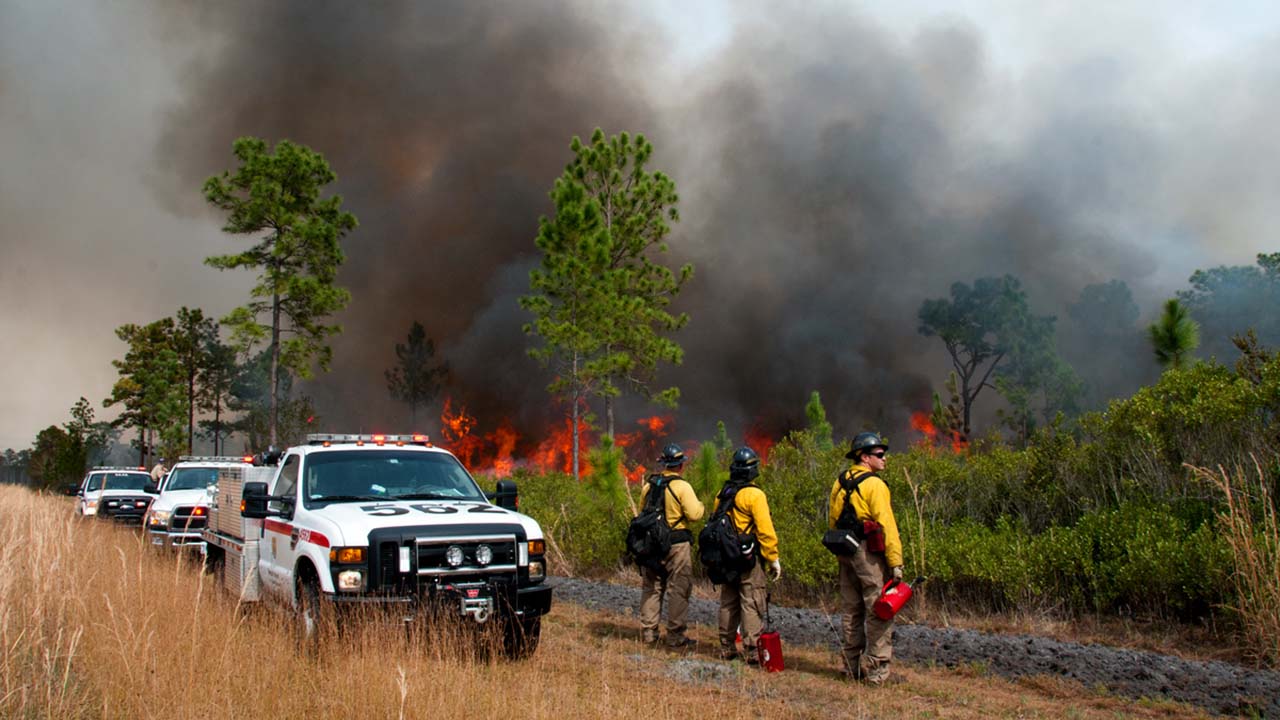
In 2021, California experienced 8,619 wildfires that burned 2.6 million acres. Experts predict climate change will increase the intensity of wildfires, spreading heavy smoke across large areas of the country and impacting the health of millions. This growing crisis has prompted the American Lung Association to commission a new study highlighting the negative air quality and health impacts of wildfires and the potential of using prescribed fire as a solution.
“Wildfire smoke is particularly problematic in terms of what’s in the pathway of the individual fire, whether it’s trees or brush or cars and homes or consumer electronics,” said American Lung Association National Senior Director, Advocacy, Clean Air Will Barrett. “We know that there is this toxic stew that can be created of smoke, ash and chemicals that can go into the smoke and we know if you breath that smoke, there is a wide range of public health challenges and emergencies that could follow.”
The study “Can Prescribed Fires Mitigate Health Harm?” was prepared by PSE Healthy Energy.
“The research shows that prescribed fires can effectively lower the risk of wildfire and smoke impacts and restore ecosystem health and resiliency in fire adaptive landscapes,” said PSE Healthy Energy’s Director of Energy and Health Lee Ann Hill. “Given this, it seems like prescribed fires should remain a strategy to mitigate wildfires moving forward.”
A prescribed fire is a planned and controlled burning of an area to reduce “fuel loadings,” which are combustible materials that could burn in a wildfire. This method aims to reduce wildfire risks in vulnerable areas, as well as improve the health of the local ecosystem.
Some key findings from PSE Health Energy include:
- Wildfire activity is predicted to increase in the decades ahead and expanded prescribed fire activity is needed to mitigate wildfire risk and associated impacts,
- Prescribed fire can be used to mitigate the negative air quality, health, and safety impacts of large-scale wildfire and can simultaneously reduce fuels to reduce wildfire risk while supporting ecosystem health and resiliency,
- Existing research supports the notion that historical fire suppression policies are insufficient for longer-term fire management. Fire suppression has been shown to defer, rather than mitigate, air quality and health burdens associated with smoke. These strategies result in increased fire intensity and an increase in the number of people exposed in a single smoke event,
- While increasing prescribed fire activities may contribute to local air quality impacts, prescribed fire can be conducted in ways that minimize harmful smoke exposure potential. Prescribed fires are implemented under planned, predictable circumstances where additional measures can be taken to minimize exposures,
- Expanded prescribed fire activities should be coupled with additional policies and best practices to mitigate potential harmful smoke exposure, and
- Further research is needed to evaluate comparative risks of prescribed fire smoke and wildfire.
The use of prescribed fires to mitigate the damage from wildfires was successfully put to the test last year in South Lake Tahoe. Expanding a range of forest resilience work has been a key focus for the California Economic Summit. Earlier this year, a coalition of organizations working with the California Forward Action Fund urged legislators to make greater forest health investments, including prescribed fires.
“We know that there have been decades of prescribed fire application and over those decades the climate science has only become clearer,” said Barrett. “So as the science evolves, we hope that the policy continues to evolve as do best practices.”

